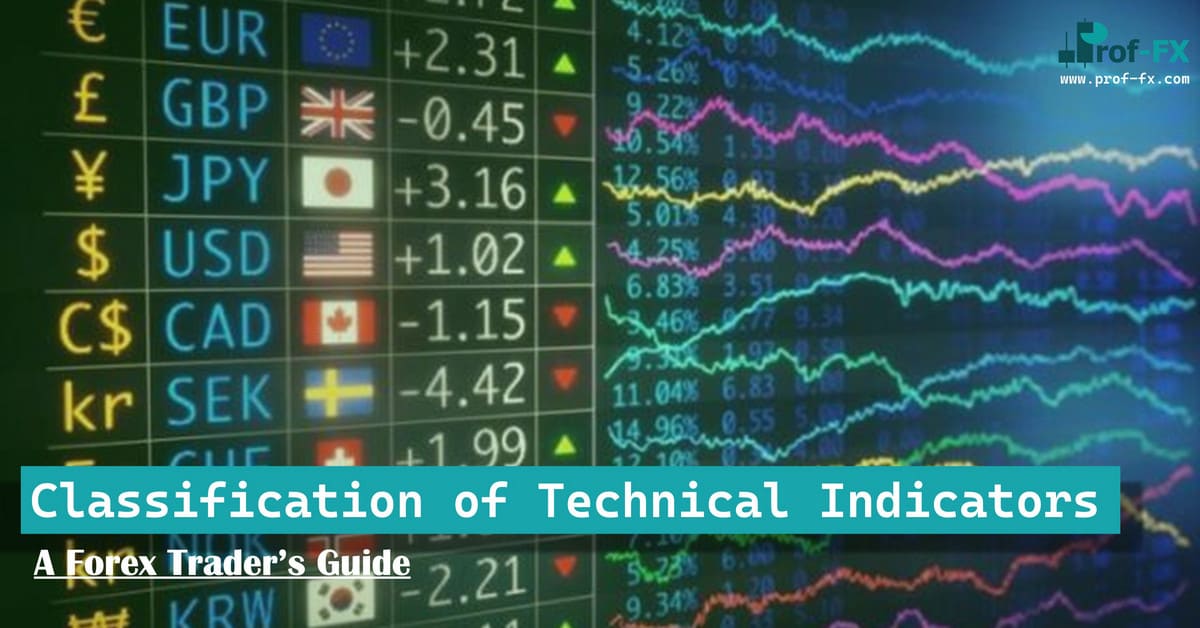Technical indicators are essential tools that help forex traders make sense of price movements and market trends. By analyzing charts, traders can better understand trends, average prices, and volatility—leading to more informed trading decisions. A wide array of technical analysis tools is available to assist with various aspects of trading, from spotting trends to measuring market volatility.
In this article, we’ll dive into the most commonly used technical indicators, explore how to interpret their signals, and share tips to make these tools an integral part of your forex trading strategy.
The Four Main Types of Technical Indicators
Technical indicators are divided into four key categories: Trend Following, Oscillators, Volatility, and Support/Resistance. Each category serves a distinct function, from determining price direction over time to identifying crucial support and resistance levels.
A Breakdown of Popular Technical Indicators
1.Trend Indicators
Trend-following indicators are used by traders to identify whether a currency pair is in an uptrend or downtrend. You’ve likely heard the phrase “the trend is your friend”—these indicators help confirm whether a trend exists and its direction.
Moving Average (MA)
A Moving Average smooths out price fluctuations by averaging the price over a set period. This helps traders see the overall direction of the currency pair, whether it’s rising, falling, or remaining sideways. The two most commonly used types are Simple Moving Averages (SMA) and Exponential Moving Averages (EMA).
Ichimoku Indicator
While it may look complex at first glance, the Ichimoku indicator offers insights into trends, support, resistance, and potential reversals. Originating from Japan, this all-in-one tool is highly effective in determining whether a trend is likely to continue or reverse.
ADX Indicator
The Average Directional Index (ADX) is used to determine if the market is trending or ranging, but it doesn’t indicate trend direction. Traders can use it as a filter to decide whether to employ a trend or range-based strategy, depending on the current market conditions.
2. Oscillator Indicators
Oscillators help traders measure the strength of momentum for a particular currency pair. These indicators fluctuate between set levels and can alert traders to potential overbought or oversold conditions.
Relative Strength Index (RSI)
The RSI is one of the most popular oscillators, measuring the ratio of recent gains to losses over 14 periods. It ranges from 0 to 100, with values above 70 indicating overbought conditions and below 30 signaling oversold levels. Traders often use it to identify potential entry and exit points.
Stochastic Oscillator
The Stochastic Oscillator compares the current price with the range over a set number of periods. It generates two lines—%K and %D—that traders use to spot potential trend reversals. A crossover of these lines can signal whether it’s time to enter or exit a trade.
Commodity Channel Index (CCI)
The CCI differs from other oscillators as it doesn’t have a fixed upper or lower boundary. Typically, traders look for levels above +100 as overbought and below -100 as oversold, using this information to gauge potential market reversals.
MACD Indicator
The Moving Average Convergence Divergence (MACD) tracks the difference between two EMAs and plots a signal line over the MACD line. A cross of the MACD line above the signal line suggests a buying opportunity, while a cross below indicates selling potential.
3. Volatility Indicators
Volatility indicators measure how much the price fluctuates for a particular currency pair, helping traders decide on appropriate trade sizes, stop-loss levels, and profit targets.
Bollinger Bands®
Bollinger Bands® are made up of a 20-period simple moving average with upper and lower bands set two standard deviations apart. These bands expand and contract with market volatility, helping traders identify potential breakout points or consolidations.
Average True Range (ATR)
The ATR measures the average range between the high and low of a currency pair over a set period, usually 14 bars. A higher ATR indicates increased volatility, while a lower ATR suggests a more stable price movement.
4. Support/Resistance Indicators
Support and resistance levels are crucial in technical analysis. These levels represent price points that act as barriers, preventing the price from moving further in a certain direction.
Pivot Points
Pivot points are calculated using the previous period’s high, low, and closing prices. Traders use these levels to identify potential support and resistance, helping them make informed decisions about where price reversals might occur.
Donchian Channels
Donchian Channels create a price envelope by plotting the highest high and the lowest low over a set number of periods. These channels serve as dynamic support and resistance levels and can signal potential breakout trades.
Bringing It All Together: Simplify Your Approach
While the technical indicators listed above can significantly improve your trading decisions, it’s essential to avoid information overload. Using too many indicators can lead to “paralysis by analysis,” making it difficult to take decisive action.
Instead, choose a few indicators that align with your trading style and strategy. By keeping your analysis simple and focused, you’ll be better equipped to respond to market conditions and execute successful trades.
Final Thoughts for Forex Traders
Technical indicators are a valuable asset for any forex trader, offering insights into market trends, momentum, volatility, and key price levels. The key to success is learning to use these tools effectively without overcomplicating your trading strategy. Start with the basics, find indicators that complement your approach, and continuously refine your analysis.
For traders looking to deepen their understanding of technical indicators, there are many free resources available to explore topics like the Ichimoku Cloud or the most effective trading indicators for beginners.






